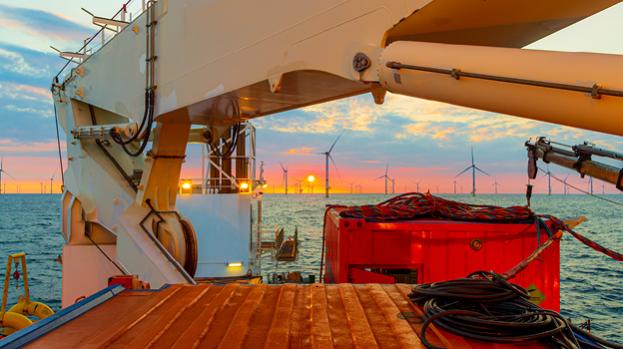There’s a point in any market cycle when rates achieve a moment of equilibrium that, for a defined period of time at least, is both stable and comfortable for all parties involved. It’s like a finely balanced seesaw, both ends hovering around the horizontal. And then something happens. A gust of wind, a child’s arrival – and the seesaw tilts, perhaps decisively. Equilibrium is lost, the moment is gone. A new cycle begins.
Right now, the marine insurance market is poised at such a moment. For four years, marine cargo has enjoyed hard market conditions. But rates are starting to move. While some lines continue to rise, brokers are requesting discounts in others. Having been unable to travel during the pandemic and meet face-toface, brokers are understandably keen to remind clients of the valuable service they perform. Placing pressure on underwriters is one way of achieving that.
Rate inadequacy
It is not just marine cargo affected by this nascent softening: marine hull and specie are beginning to slide, too. The issue, however, is that while marine cargo has enjoyed a degree of rate adequacy, hull and liability have yet to achieve that position. Rates in these classes are still well below where they need to be – yet the group-think fuelling market softening is already encroaching on their performance.
While this cross-contamination would be undesirable at any time, it’s doubly so now. The marine market finds itself in what is effectively a new world. As the pandemic’s grip on the economy loosens, a range of factors is increasing the market’s exposures at the precise moment that rate momentum wanes. Some of these factors are a direct result of the pandemic; others have their roots elsewhere. The net result is a market unlike any I’ve experienced in over 30 years of marine underwriting. Indeed, the last time we saw this kind of tipping point was back in the mid-1990s.
Unfamiliar waters
So, what are these factors impacting on our marketplace? The global supply chain crisis is certainly foremost among them. The build-up of containers at ports like Felixstowe is leading to greater port accumulations and more vessels being brought into service. One shipping line has already talked about off-loading cargo from larger vessels onto multiple smaller vessels to be moved to the UK. Data from London-based Drewry Shipping’s world container index showed that the composite cost of shipping a 40- foot container on eight major East-West routes hit $10,374.64 (about £7,618) in September 2021, up 323% in a year. Even though the rate then dipped, it was still at $9,146.41 in November.
Port congestion is not helped by the fact that some of the vessels unloading containers are among the largest in the world. These huge influxes of cargo take time to unload and distribute. On a single day in September 2021, it was reported that 73 vessels were off the coast of California waiting for berths to become available at the state’s two main ports. On one occasion, China’s Ningbo-Zhoushan Port had to be shut down following a worker’s infection with Covid-19. This shows just how vulnerable major ports are to the pandemic.
The rising price of energy is also having a significant effect on the marine insurance market, increasing the cost of storage and energy-related cargos such as liquified natural gas (LNG). Post-pandemic, low inventories and surging requirements in Asia and Europe have led to a rapid increase in energy imports. Shortages of natural gas are reigniting demand for oil, which needs to be transported. Worryingly, demand is predicted to outstrip supply by 700,000 barrels a day.
At the same time, climate change is increasing the unpredictability of weather patterns with greater potential for extreme weather events and resultant losses. The other impact of climate change is that, in the global drive to achieve net zero emissions, vessels are transitioning to low carbon fuels. This requires modifications to engines which adds a degree of unpredictability to the market.
Loss adjusters restricted
The inability of loss adjusters to travel freely because of the pandemic means that claims settlement will likely require more time. This is of great concern because loss adjusters who are on the ground quickly can mitigate claims, particularly those with an element of business interruption cover. They can also assist with business continuity, moving cargos from one vessel to another, for example.
At the same time as all of this is happening, the London market is facing greater competition. According to the London Matters 2020 report, London’s marine market share was holding steady at 33%. But marine insurance markets are developing all around the world, some willing to drive prices lower in search of market share. That’s why the quality of the claims service offered is so critical to an insurer’s positions. Any market can write a risk cheaply, but the London Market stakes its reputation on having the expertise and claims experience to provide truly world-class claims service.
These factors are changing the environment in which underwriters operate. They’re new and unpredictable, yet my concern is that our market insists on behaving as it has done in the past, rather than accepting that new circumstances demand new responses. If we have got one thing on our side that might sway opinions, it’s data. Today, the London Market has more metrics and data points to determine rate adequacy than ever before – and you’ll note I’m talking about rate adequacy, not rate rises. That’s a fundamental shift in attitude for London.
Turn the tide
This explosion of data on vessel types, weather patterns, port controls, warehouse conditions and many other factors is allowing us to pinpoint the precise rate at which we can maintain a healthy and sustainable market. In addition, we have access to data from third-party vendors and other parts of our business. That’s a treasure trove of information with which to illuminate the situation in which we find ourselves.
If anything can prevent London’s marine market from repeating the mistakes of the past, it’s clear-headed thinking and data. The seesaw may still be hovering in the horizontal position, but evidence of change is all around us. If we choose to ignore that evidence, responding instead by adopting historically rooted modes of behaviour, the market softening will spread and gather pace. If we use the new tools we’ve been given, we have a brief opportunity to break old habits.



